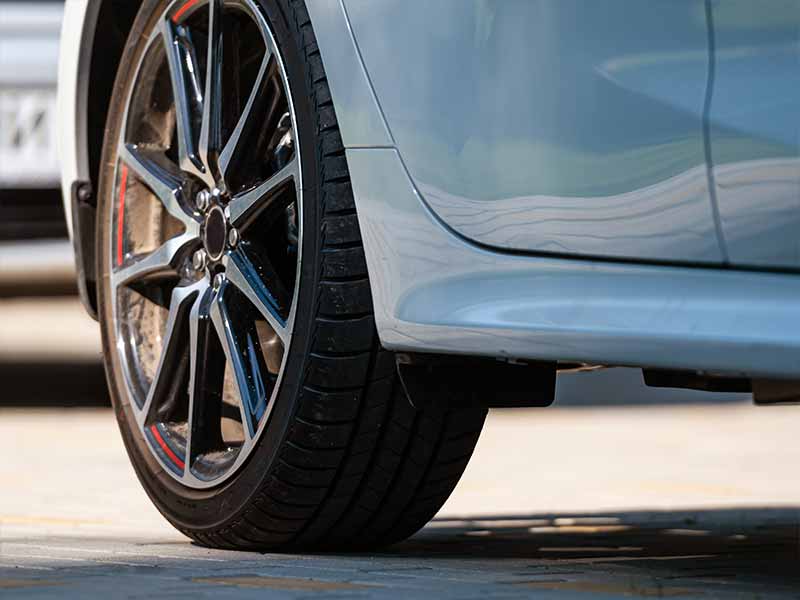Ever heard a strange thumping noise from the back of your car and wondered what it was? Or felt your car sway more than usual? You could be dealing with cupping on your rear tires—a problem you shouldn’t ignore for the sake of your safety and your wallet!
What Causes Cupping On Rear Tires?
Cupping on rear tires is typically caused by a combination of worn suspension components, unbalanced tires, and poor wheel alignment. To fix this issue, consult a professional for a thorough inspection and consider tire replacement or repair options based on the severity.
In this article, we’ll delve into the nitty-gritty of what causes cupping on rear tires and offer comprehensive solutions to fix the problem. We’ll cover how to identify signs of cupping, temporary and long-term fixes, and share crucial preventative tips to keep your rear tires in top shape.
Let’s take a closer look.
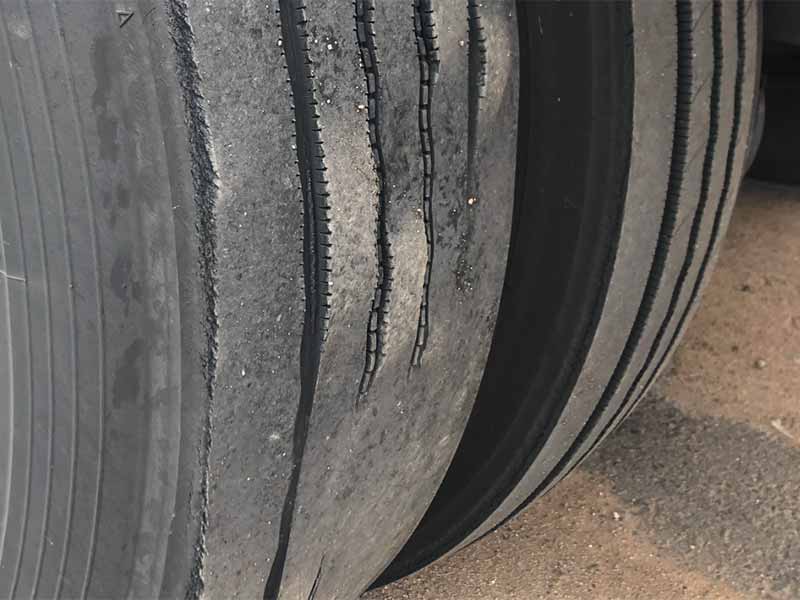
Understanding Tire Cupping on Rear Tires
What is Tire Cupping?
Tire cupping, also sometimes referred to as “scalloping,” is a form of uneven tire wear that appears as dips or “cups” in the tread of your tire. If you run your hand along the surface of the tire, it won’t feel smooth. Instead, you’ll feel highs and lows along the tread. This is more than just an inconvenience; it can affect your car’s performance, safety, and comfort.
Why Rear Tires?
Although cupping can occur on any tire, it’s especially concerning when it happens on the rear tires. The rear tires play a crucial role in your car’s stability and are often more susceptible to wear and tear than front tires, mainly due to the weight distribution in various types of vehicles like trucks and rear-wheel-drive cars.
Signs You Have Cupped Rear Tires
Identifying tire cupping early is crucial to prevent further damage. Here are some signs to look for:
- Vibration: You might start feeling a vibration through the seat or floor.
- Noise: A thumping or humming noise that comes from the rear of the car. It sounds like you’re driving on a rough road, even if the surface is smooth.
- Visual Inspection: When looking at the rear tires, you will notice uneven dips or scalloped edges along the tread.
- Handling: Your car may not handle turns as well, or you might find it swaying a bit.
How to Confirm It’s Cupping
If you suspect your rear tires are cupped, you can perform a simple “coin test” to check the tread depth. Here’s how:
- Take a coin, like a penny.
- Insert it into several tread grooves across the tire.
- If parts of the tread are noticeably shallower than others, you might be dealing with cupping.
Contributing Factors Specific to Rear Tires
Cupping on rear tires is often the result of specific issues that impact these tires more than the front ones. These can include:
- Weight Load: Overloading the rear part of your vehicle can put extra stress on your rear tires, causing them to cup.
- Alignment Issues: Poor alignment can also affect rear tires, though it’s more commonly associated with front tires.
- Shock Absorbers: Rear shock absorbers that are worn out or leaking can lead to cupping. Shock absorbers are crucial in keeping the tire in contact with the road.
- Tire Balancing: If the rear tires are not balanced properly, they can develop an uneven wear pattern, leading to cupping.
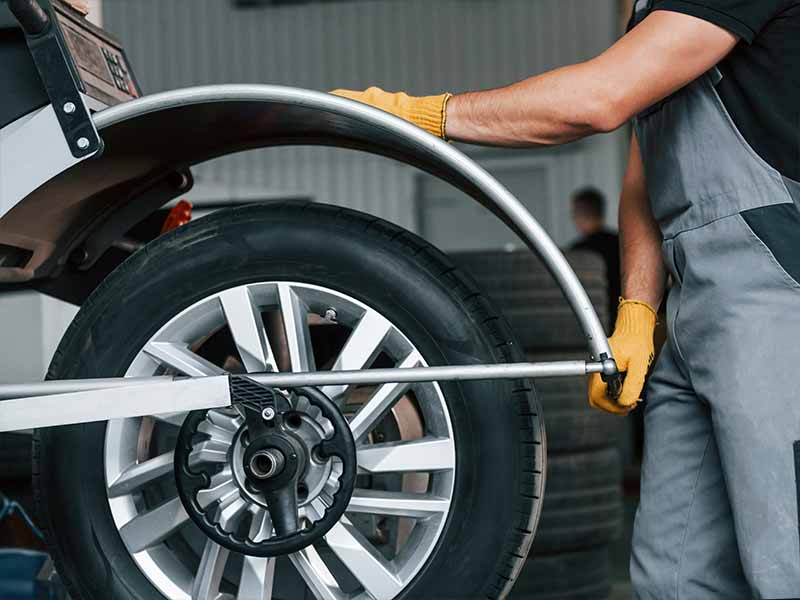
Causes of Cupping on Rear Tires
General Causes Affecting Rear Tires
Understanding what causes cupping in rear tires is the first step toward prevention and repair. Generally, cupping can be a result of a variety of factors, many of which can affect rear tires more severely than front ones. Here are some of the general causes:
- Out-of-Balance: Tires that are not properly balanced will move up and down as the wheel spins and cause a cupping pattern to appear in the tread.
- Uneven Tire Pressure: Tires that are not inflated properly can wear unevenly. Rear tires often require different pressure levels than front tires, especially in trucks.
- Low-Quality Tires: Cheaper or poorly made tires are more prone to various kinds of wear, including cupping.
- Old Tires: The older the tire, the more likely it is to suffer from various kinds of wear patterns, including cupping.
Rear Tires Cupping on Outside Edge
If the cupping is happening primarily on the outside edge of the rear tires, there are specific issues to consider:
- Poor Alignment: Rear-wheel alignment issues can cause the outside edges to wear down faster than the rest of the tire.
- Overinflation: Tires that are filled beyond their recommended pressure levels are more likely to wear on the edges.
Rear Tires Cupping on Inside Edge
Cupping on the inside edge of rear tires could indicate other specific problems:
- Underinflation: Not enough air pressure often leads to more wear on the inside edge.
- Worn Out Suspension Components: Components like bushings or control arms that are worn or damaged can cause the inner part of the tire to wear more quickly.
Role of Shock Absorbers and Worn Suspension in Rear Tires
One of the primary reasons for cupping, especially in rear tires, is the condition of the shock absorbers and the suspension system. Here’s why:
- Shock Absorbers: If your rear shock absorbers are worn out or leaking, they can’t keep the tire firmly on the road. This causes bouncing and leads to cupping.
- Suspension System: Worn-out components like springs, bushings, or control arms can also contribute to cupping by causing the tire to bounce or wobble.
Unbalanced Rear Tires
Imbalance in rear tires is another leading cause of cupping. If a tire is unbalanced, it will wobble or bounce as it rotates, leading to uneven wear and eventually, cupping. It’s essential to get your tires balanced regularly, especially the rear ones, to avoid this issue.
Other Factors to Consider for Rear Tires
- Driving Habits: Aggressive driving, like fast turns and heavy braking, can cause rear tires to wear unevenly.
- Road Conditions: Consistently driving on rough or uneven surfaces can contribute to cupping over time.
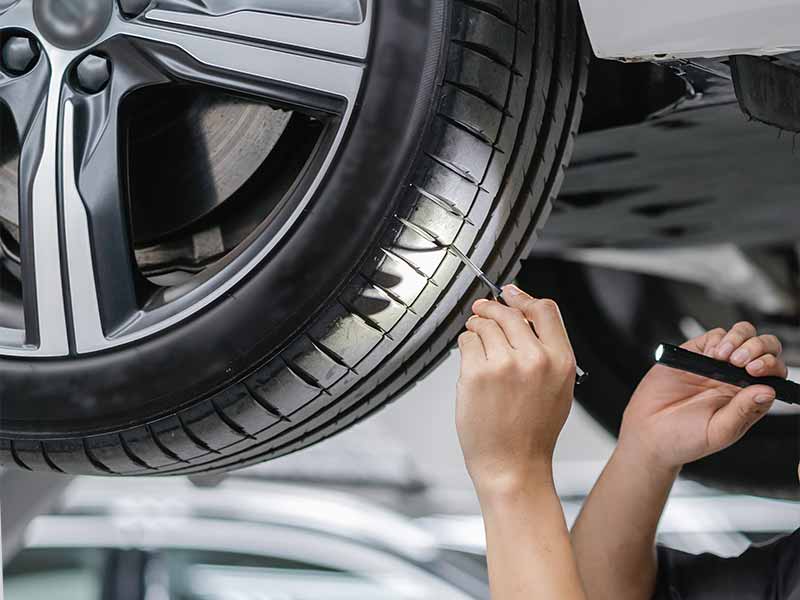
Can Rear Cupped Tires Smooth Out?
The Reality of “Smoothing Out”
The term “smoothing out” can be a bit misleading when it comes to cupped rear tires. While some minor wear issues may even out over time, cupping is generally not something that will resolve itself. Instead, the damage can actually get worse, causing additional problems for your vehicle, such as:
- Decreased Fuel Efficiency: Cupped tires can make your vehicle work harder, burning more fuel in the process.
- Compromised Safety: Uneven tires can lead to poor vehicle handling, increasing the risk of accidents.
- Additional Wear and Tear: Ignoring cupped tires may also accelerate wear on other parts of your vehicle, like the suspension system and brakes.
Temporary Solutions
If you’re looking for a quick fix or if you believe the cupping is minimal, there are some actions you can take, but they are more like band-aids than actual solutions:
- Tire Rotation: Shifting the rear tires to the front can sometimes redistribute wear, but this won’t solve the underlying issue and can impact front tire performance.
- High-Speed Balancing: Some tire shops offer high-speed balancing which can temporarily correct minor imbalances, but this too won’t fix the root causes.
The Need for Professional Inspection
While it’s tempting to wait and see if the rear cupped tires smooth out, it’s usually not advisable. An inspection by a certified professional can give you a detailed diagnosis and offer repair options to address the root causes.
What Professionals Look For
When you take your car in for an inspection, professionals are likely to examine:
- Shock Absorbers: To check if they are functioning correctly or if they need replacement.
- Suspension Components: Such as springs, bushings, and control arms, to identify any worn-out parts.
- Tire Balance and Alignment: To see if imbalances or misalignment are contributing to the problem.
How to Fix Cupping on Rear Tires
Identifying the Severity of the Problem
Before diving into fixes, it’s essential to gauge how severe the cupping is on your rear tires. Minor wear may be remedied with simpler solutions, but significant cupping will require more comprehensive steps.
Immediate Actions to Take
If you discover your rear tires are cupping, here are some immediate steps to take:
- Check Tire Pressure: Ensure it’s at the recommended level for your vehicle. Overinflated or underinflated tires can contribute to cupping.
- Visual Inspection: Examine other components like the shock absorbers and suspension system for obvious damage or wear.
Professional Solutions
For a long-lasting solution, consult a certified mechanic who can provide services like:
- Wheel Alignment: Misaligned wheels are one of the key causes of cupping. A professional alignment can correct this issue.
- Tire Balancing: This process ensures that weight is evenly distributed across your tires, reducing the chances of cupping.
- Shock Absorber Replacement: Worn or faulty shock absorbers are often a cause of cupping, especially in rear tires. Replacing them can alleviate the problem.
- Suspension Repairs: Worn out or damaged suspension components can contribute to tire cupping. Repairs or replacements may be necessary.
Replacement: When It’s the Only Option
Sometimes, the only viable fix for severely cupped rear tires is replacement. If the cupping has led to extensive damage, driving on these tires becomes a safety risk. When replacing:
- Choose Quality Tires: Opt for well-reviewed, reliable brands.
- Mind the Warranty: Some tires come with wear warranties, which can be a lifesaver if cupping occurs again.
Preventative Measures for the Future
Once you’ve addressed the immediate issue of cupping, it’s essential to focus on prevention:
- Regular Maintenance: Including alignments, balancing, and tire rotations to promote even wear.
- Check Tire Pressure Monthly: Keeping them inflated to the recommended levels can help prevent cupping.
- Driving Habits: Try to avoid hard braking, fast turns, and always drive cautiously on rough or uneven roads to prevent uneven wear.
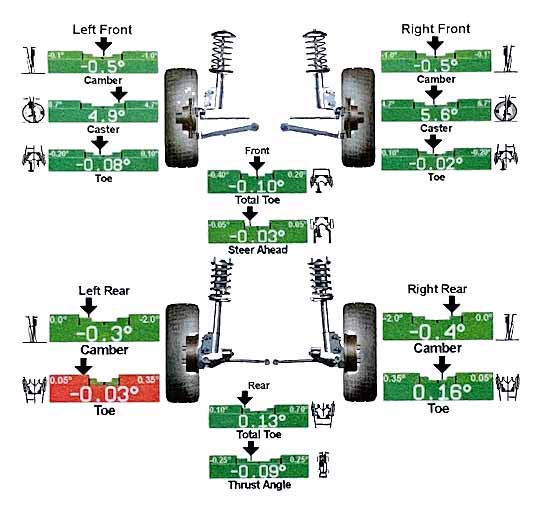
Preventative Tips for Rear Tire Cupping
Why Prevention is Key
Preventing rear tire cupping before it starts is a lot easier, safer, and more cost-effective than dealing with it after the fact. The following tips are aimed specifically at helping you avoid tire cupping in your vehicle’s rear tires.
Choose the Right Tires for Your Vehicle
- Quality Matters: Investing in high-quality tires from reputable brands can make a significant difference in preventing uneven wear and cupping.
- Right Fit: Not all tires are suitable for all vehicles. Make sure the tires you choose meet the specifications for your make and model.
Maintain Proper Tire Pressure
- Regular Checks: Check your tire pressure at least once a month and before long trips. Use a reliable tire gauge for accurate readings.
- Follow Manufacturer Guidelines: Always inflate rear tires according to the vehicle manufacturer’s guidelines, which can be found in the owner’s manual or on a sticker inside the driver’s door.
Regular Inspections and Maintenance
- Visual Inspections: At least once a month, take a few minutes to inspect the tread and sidewalls for signs of uneven wear, damage, or cupping.
- Professional Check-ups: Have a certified mechanic inspect the tires and overall wheel assembly at regular intervals, such as during oil changes or at least twice a year.
Timely Balancing and Alignment
- Scheduled Balancing: Make tire balancing a regular part of your vehicle’s maintenance routine. Unbalanced rear tires are a significant cause of cupping.
- Alignment Checks: Incorrect alignment can cause uneven wear, including cupping. Have the alignment checked whenever you notice your vehicle pulling to one side or after hitting a pothole.
Take Care of the Suspension
- Regular Inspections: A worn-out suspension system can be a leading cause of rear tire cupping. Have your suspension components inspected and repaired as necessary.
- Shock Absorbers: Pay special attention to the rear shock absorbers, as worn or faulty ones can lead directly to tire cupping.
Mind Your Driving Habits
- Avoid Quick Starts and Stops: Aggressive driving can contribute to uneven tire wear, including cupping.
- Watch the Road: Try to avoid potholes, debris, and rough road conditions that can cause irregular tire wear and potential cupping.
Rotate Your Tires
- Regular Rotation: This can redistribute the wear more evenly across all tires, helping to prevent cupping specifically in the rear tires.
- Follow Rotation Guidelines: Check your vehicle’s owner’s manual for recommendations on how often to rotate the tires.
Resources
Below are some links you may find helpful when learning about tires
Final Thoughts
Understanding the signs like uneven tread wear, increased tire noise, and vehicle performance issues can help you catch the problem early. To fix cupped tires, a multi-pronged approach is often needed. This can include simple fixes like checking tire pressure and more advanced solutions like wheel alignments, balancing, and even replacing shock absorbers or other suspension components.
Prevention is always better than cure. By choosing quality tires, maintaining proper tire pressure, and observing regular maintenance routines like balancing and alignment, you can go a long way in avoiding rear tire cupping in the first place.
Good luck and happy motoring.
